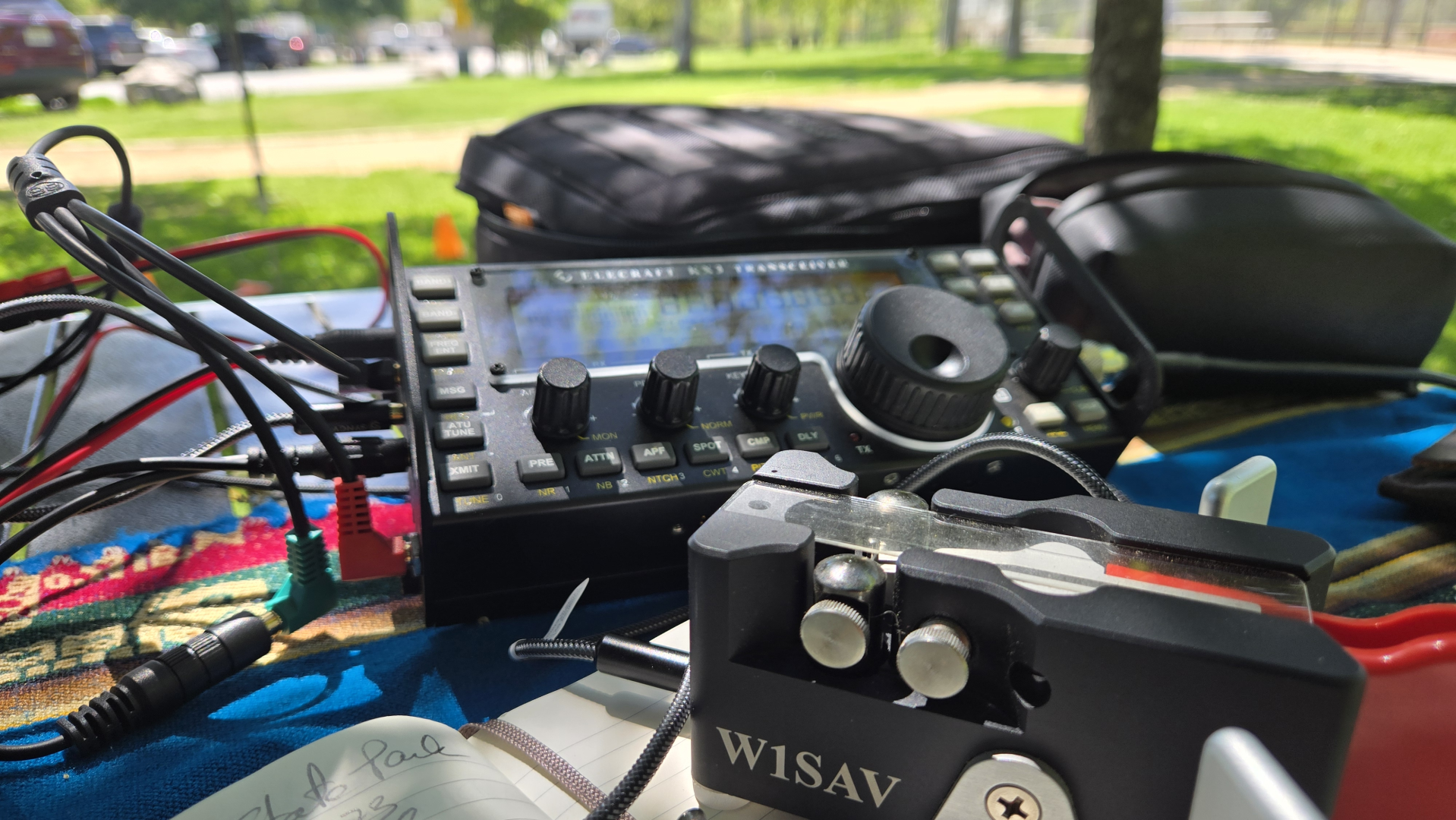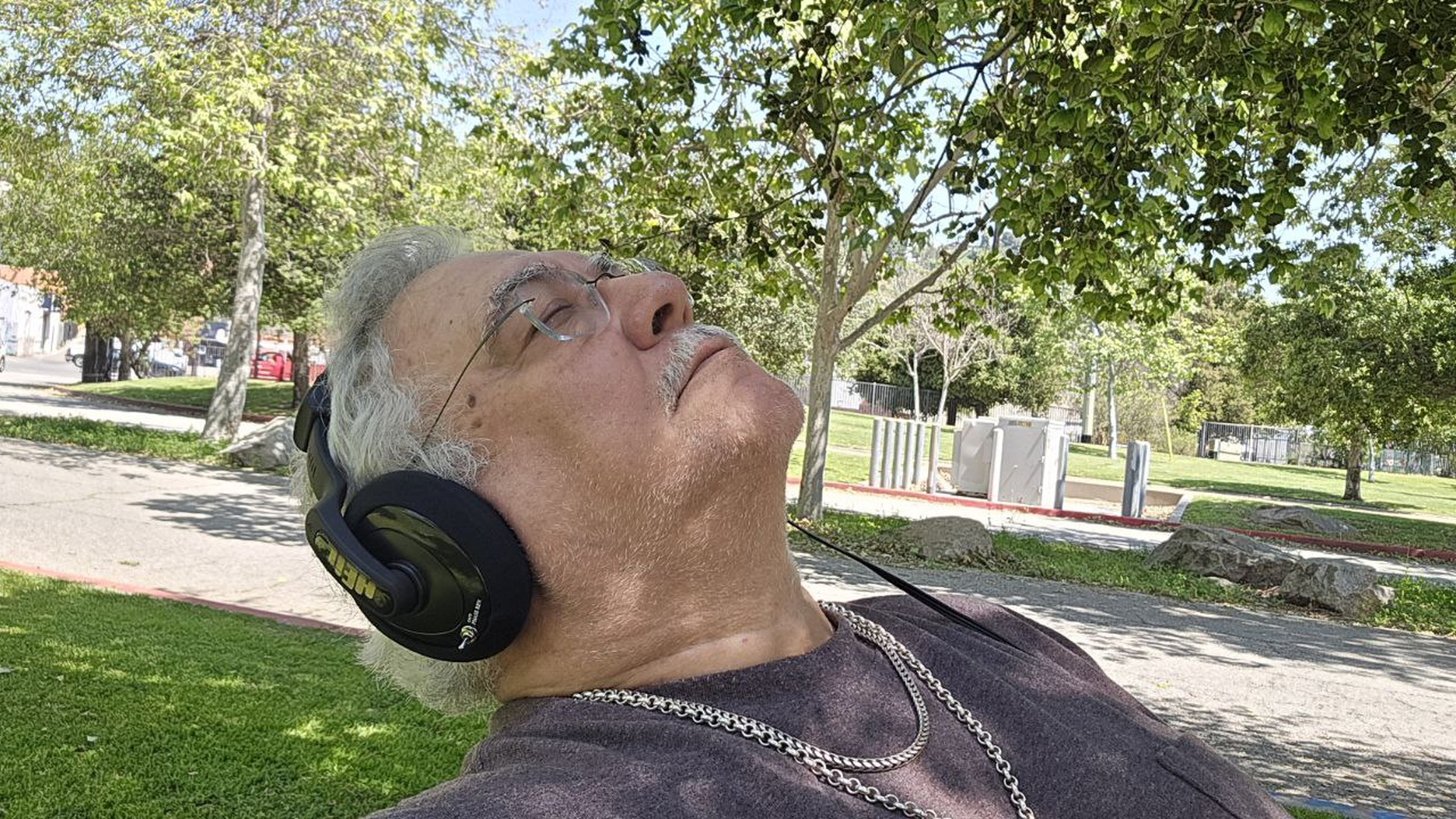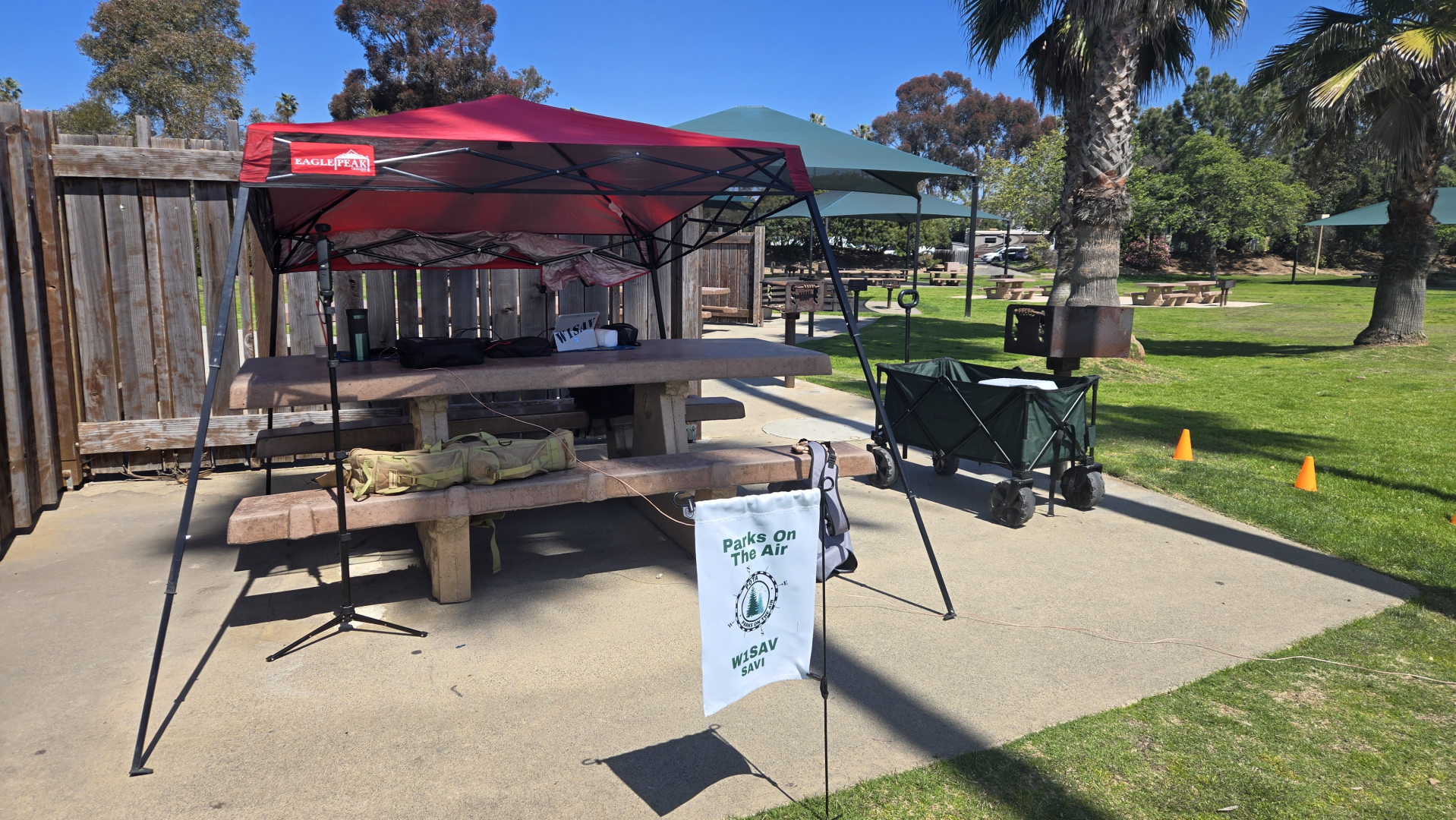Activated on February 10th, 2024

Three significant events came together for me on the 10th of February, 2024: my first QRP POTA activation, my first activation with my brand-new KX3, and my first anniversary of my retirement.
I was undecided about going to a park, and as usual, it was a last-minute decision. I really did not want to sit on a cold bench and although there was to be no rain, I also did not want to be cold. Yes, in Southern California the sub-60-degree weather is cold. So, I layered up and went out to face this brutal environment in search of adventure!
Out of convenience I went to my closest park about 15 minutes away, Rio de Los Angeles State Park, but did not set up in my usual spot. Instead of using the covered bench, I set up about 40 feet further south on an uncovered bench. I was concerned that the curved metal covering of my usual spot may interfere with my very compromised vertical antenna, the AX1 from Elecraft.
Over the last couple of weeks, I’ve gathered all the bits and bobs I’ve seen Thomas K4SWL use in his videos and QRPer blog. Thomas has this down to a science. During this time, I’ve played with the radio, read the manual, configured my kit, and had everything to go in one bag. The manual of the KX3 is quite comprehensive, but truth be told, one really must get it to the field and use it for all that information begins to really sink in. In my case, I am a Yaesu man, so Elecraft is a new environment for me.
After my usual breakfast at the little Mexican dive, I took off on this new adventure arriving at the park just before high noon. All my equipment, except for the camera stand, was in my backpack and Betelgeuse was parked ten feet away. While playing with the KX3 at the house, I realized that the bipod used to support the antenna was not as sturdy as I would like so, I used a separate small tripod positioned at the opposite end of the picnic table instead.

I don’t know why I was nervous. Technically I knew QRP is a very workable way to communicate. I knew that conditions affect both QRP and QRO rigs the same way. I knew that the KX3 is an extremely capable machine. After all, this ten-year-old technology continues to be back ordered to the tune of 18 weeks. Still, I had a new radio, new keys, uncertainty, and well, I just was.
Taking my time getting ready, setting up HAMRS, finding an open frequency, and spotting myself, I was calling CQ at 12:30. Right off the bat, my Putikeeg paddles gave me trouble, mainly because I was used to a feather touch on my other paddles, and I could not find a way to adjust the Putikeeg!

The fifteen-meter band was a good place to start, being the top-most band the AX1 can handle from everything I read. None-the-less, I think I called for about 20 minutes with no success. Hmm… Thinking that this was enough time to wait and come to think of it I’ve done that using my FT-891, I moved over to the 17-meter band and set up at 18.082 MHz. And just like that, five minutes later, I made my first QRP contact with Dale AC5OC from the north-west part Arkansas. High-fiving the air, because there was no one else there, I continued my 17-meter quest. Four minutes later I made my second contact and then nothing. At about this time a gentleman engaged me in conversation about radios and Morse Code. Not hearing anything we had a conversation lasting about 20 minutes.
Meanwhile, although the weather was cold by Southern California standards, I was down to just my sweatshirt. Sitting still in direct sunlight warmed me up allowing me to enjoy the slight, cool breeze across my face. Eventually the temperature broke 60 degrees, and I ended up doffing the sweatshirt as well. It was a beautiful day with a blue sky and some high clouds. A far cry from when the atmospheric river provided a four-day simulation of the Pacific Northwest.

Returning to my activation I moved to the 20-meter band and settled at 14.065 to see if the fishing was any better. Now I was cooking with gas! I was getting contacts and enjoying life again. In the meantime, my Putikeeg paddle was giving me problems. Not able to adjust them, I really had to press hard on the paddles. I had problems with the Rs and Ls making me sound even more like a noob! Constant errors were the theme for the day. At times I was pressing so hard I saw both paddles move while trying to form characters. I will try to research adjustments some more, otherwise I think I lost out on $63.
I noticed a slowing in the number of contacts. This gave me time to appreciate the activities around me. Far to my north were folks playing a Mayan field game, in front of me was a soccer game in full swing, and people riding bikes and jogging. In between enjoying my vistas, I would make other contacts. Until, that is, I had a huge digital signal trounce all over my frequency. I continued with my activation when it happened again. I believe it was an RTTY transmission, and due to its pattern, they may have been calling CQ, although I cannot confirm that.


I moved two kilohertz down wanting to complete my ten contacts and to add safety contacts to my log. My target is thirteen contacts as I am afraid to bust an activation because one of the first ten contacts may be bogus. A fact that was indeed the case for this activation. Where I left the park with 17 contacts, after validation at home I ended up with 16. Sweet sixteen for my first QRP activation. Not bad!
I was quite happy with my five Watts and the AX1. I got a DX contact in Alaska and reached out as far east as New Jersey. My first apprehension that my location might not be so good wained as the activation wore on. For a bit there, I thought I was not going to activate. I just kept thinking…just one more. As is often the case with me, I seem to get a higher QSO rate just before I go QRT. In fact, I got two QSOs after I conspicuously sent out my QRT!

For me, this QRP stuff is not much different from my QRO stuff. Currently, I am not able to discern the difference in the operation. My radio was on for 2.5 hours using a 3Ah battery with no solar support. When I first started the battery read 13.3 volts. When I was done, it read 13.221 volts. That could not be right, could it?
Activation Statistics
| Activation Number | 44 |
| Date | 10 February, 2024 |
| Park | K-3548 Rio de Los Angeles State Park and K-4571 Juan Bautista de Anza National Historic Trail |
| Number of Contacts | 16 |
| DX Contacts | 1 |
| Park Activated? | Yes |
| Previous Attempts | 8 |
| Park to Park Contacts | None |
| Mode | CW |
| Radio | Elecraft KX3 |
| Antenna | AX1 4-foot vertical |
| Tuner | Built in |
| Power | 5W using a 3Ah Bioenno battery |



Leave a Reply